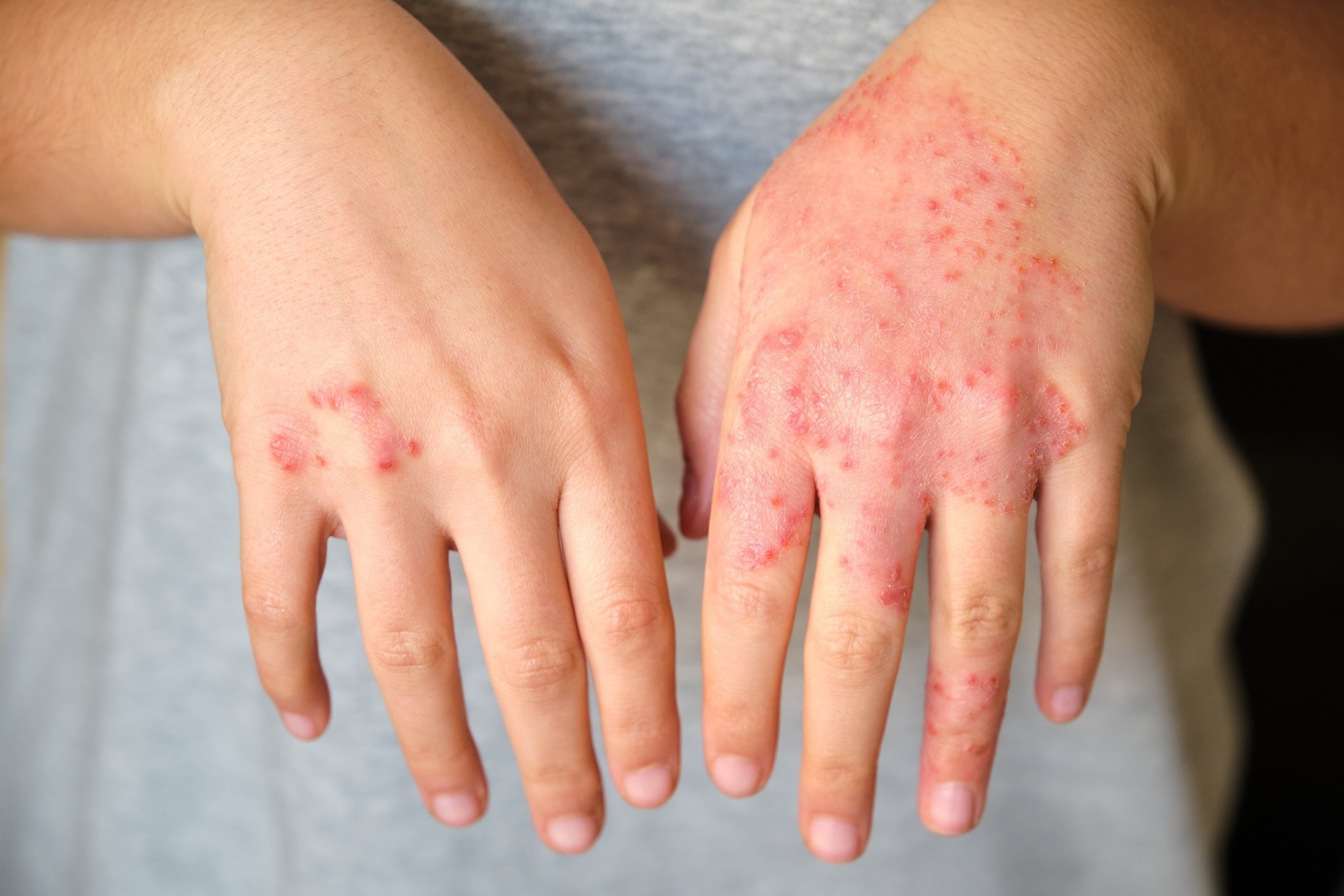
Image Credit: Ladanifer/Shutterstock.com
AD, the most common form of eczema, leads to dry, inflamed skin and persistent itching. To manage symptoms, healthcare providers often recommend regular moisturizing, daily bathing, and avoiding irritants like fragrances. If these measures aren’t effective, stronger prescription treatments may be needed.
One of the biggest challenges for patients with AD is the scratch-itch cycle, which can worsen inflammation and significantly disrupt sleep. While there are many pharmacologic treatments available, non-drug interventions remain limited.
There is a need for nonsystemic interventions for patients with mild skin involvement but high degrees of self-reported itch and scratching.
Another issue researchers highlighted is the difficulty in objectively measuring itchiness.
They further added, “The criterion-standard method of direct visualization of scratching by video recording is impractical in real-world settings. Other forms of monitoring, such as actigraphy wrist-mounted devices, have lower sensitivity in finger-dominant scratching. More recently, a flexible wearable device (ADAM sensor; Sibel Health) mounted on the dorsal hand in conjunction with a previously validated artificial intelligence–driven scratch algorithm was shown to have high sensitivity and specificity in adult and pediatric patients with AD for detection of nocturnal scratching compared against infrared video recordings.”
The researchers conducted a retrospective analysis of patients with mild AD who reported moderate to severe scratching. In the study, a wearable sensor mounted on the hand provided haptic feedback whenever its AI algorithm detected nocturnal scratching.
The primary goal of the study was to evaluate the effectiveness of the closed-loop haptic feedback system in reducing nighttime scratching. Key outcomes measured included total scratch duration (TSD), total scratch events (TSEs), mean TSEs per night, mean TSEs per sleep opportunity hour, and mean scratch duration per scratch event.
The study included 10 participants, six of whom were female, with an average age of 36. The AI-enabled system demonstrated strong accuracy, achieving an average of 99 % accuracy, 95 % sensitivity, 99 % specificity, and a 97 % F1 score among participants. All participants reported that the haptic motor successfully alerted them to scratching events. The study spanned 104 sleep nights and 831 hours of monitoring.
The researchers recorded 60 nights during week 1, with an average nightly monitoring time of 6.4 hours. During this period, participants exhibited an average of 96.5 seconds of TSD, 45.6 TSEs, and 2 seconds of scratch duration per event. In week 2, researchers recorded 54 additional nights, with an increased mean nightly monitoring time of 7.5 hours. Participants showed improvements, generating an average of 58.1 seconds of TSD, 32.8 TSEs, and 1.75 seconds of scratch duration per event.
Haptic feedback was associated with a 28 % decrease in TSEs per night (45.6 → 32.8; P = .03) and a 40 % reduction in average TSD per night (96.5 seconds → 58.1 seconds; P = .04). When normalized per hour of sleep opportunity, researchers observed a 39 % decrease in mean TSEs per hour (7.4 → 4.5; P = .004) and a 50 % reduction in mean TSD per hour (15.8 seconds → 7.9 seconds; P = .01).
Most participants found the device easy to wear and use. All participants expressed a desire to reduce their scratching behavior, and eight specifically sought a nonpharmacologic solution.
The study's small sample size limits its generalizability, and future research should expand to include pediatric patients, assess the potential benefits of daytime scratching, and examine potential impacts on skin improvement. Additionally, the researchers acknowledged that the presence of the AI device itself may have influenced scratching behavior, regardless of haptic feedback. The device also only monitored the dominant hand, leaving potential scratching with the non-dominant hand untracked.
Regardless, the closed-loop system provided real-time intervention to help manage scratching behavior. Overall, participants experienced a reduction in both total and hourly scratch duration at night, as well as a decrease in total and hourly scratch events. Future clinical trials incorporating a device sham arm, extended intervention periods, and longer follow-up assessments of clinical benefits and scratching metrics could further validate these findings.
This technology may serve as a standalone or, more likely, a supportive therapeutic device for decreasing scratching behavior in patients with mild AD who may not meet the criteria for systemic therapy or prefer to not use topical corticosteroids.
Journal Reference:
Yang, A. F. et al. (2025) Artificial Intelligence–Enabled Wearable Devices and Nocturnal Scratching in Mild Atopic Dermatitis. JAMA Dermatology. doi.org/10.1001/jamadermatol.2024.5697